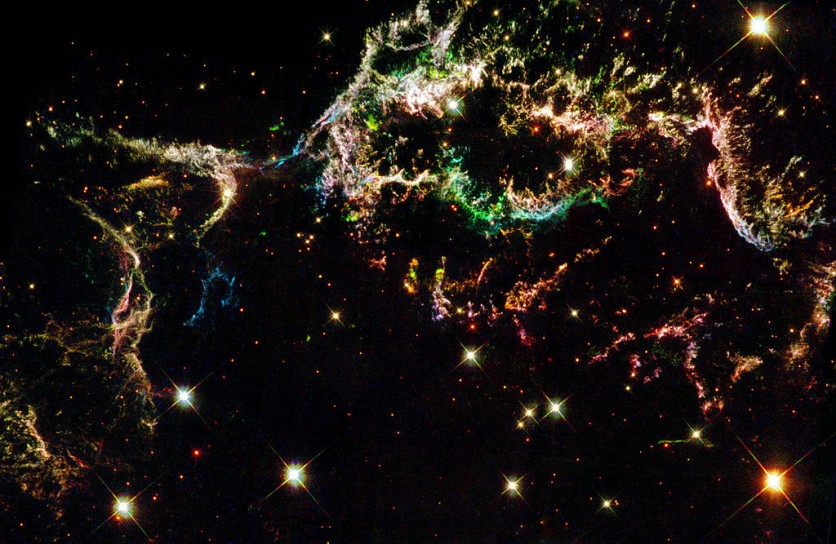If you gaze long enough into space, you will find that the cosmos resemble a city at night brimming with lights. ScienceAlert describes galaxies like streetlamps lining the streets of neighborhoods made of dark matter, connected by highways made of gas that stretch along the edges of cosmic nothingness.
Approximately 13.8 billion years ago, the Big Bang began an expansion of space and time. This blueprint of the Universe was predetermined, etched out in the tiniest of quantum physics' tremors.

However, it is still unclear what those explosions were and how they brought about the physics that caused atoms to gather into the enormous cosmic structures we observe today.
But a recent mathematical examination of the moments following a time known as the inflationary epoch suggests that some type of structure might have existed even within the churning quantum furnace that engulfed the newborn Universe, and it could aid in our understanding of its structure today.
Largest Simulation Of Universe's Smallest Region
As reported first by ScienceAlert, a combination of particle movement simulations and a gravity/quantum modeling technique was used by astrophysicists from the University of Auckland in New Zealand and the University of Göttingen in Germany to forecast how structures would develop in the condensation of particles after inflation.
The size of this type of modeling is astounding because when the Universe was just 10-24 seconds old, masses of up to 20 kg were crammed into an area that was only 10-20 meters across.
According to astrophysicist Jens Niemeyer of the University of Göttingen, the physical space that the team's simulation depicted could fit inside a single proton a million times over.
He claimed that it is most likely the largest simulation of the Universe's smallest region yet.
The Inflationary Era
The inflationary era was suggested to explain how the structure of the Universe expanded over time. This is because the Universe increased by an astounding amount within trillionths of a second of the Big Bang, effectively freezing all quantum-scale fluctuations.
After the Big Bang, the inflationary period would have started roughly 1036 seconds later and terminated 1032 seconds later. However, it lasted long enough for space to contract into dimensions that stopped slight temperature fluctuations from settling back down, according to ScienceAlert.
The calculations of the researchers concentrate on this brief period following the inflation, showing how elementary particles congealing from the froth of quantum ripples at that time could have produced fleeting halos of a matter dense enough to warp spacetime.
According to Benedikt Eggemeier, an astrophysicist at the University of Göttingen, the development of such structures, including their movements and interactions, must have produced a gravitational wave background noise.
Eggemeier claims that the strength of this gravitational wave signal can be determined using the team's calculations in the future.
ScienceAlert explained that in some instances, the powerful masses of such objects would have drawn matter into the first black holes, which are thought to have contributed to the enigmatic pull of dark matter.
Even while these structures behave in a way that resembles the large-scale clumping in our Universe, ScienceAlert said that this does not imply that they are responsible for the distribution of galaxies, stars, and gas.
However, the intricate physics taking place among those fresh particles may still be visible in the sky amid that sweeping expanse of blinking stars and pitch-black emptiness of the Universe.
This article is owned by Tech Times
Written by Joaquin Victor Tacla
ⓒ 2025 TECHTIMES.com All rights reserved. Do not reproduce without permission.




